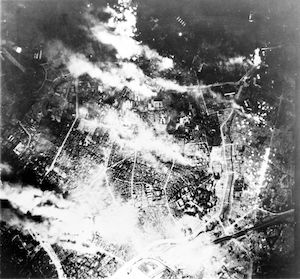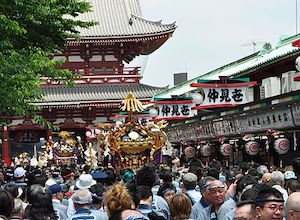History & Culture


Bombing of Tokyo
In 1943, the city of Tokyo merged with the prefecture of Tokyo to form the "Metropolitan Prefecture" of Tokyo. Since then, the Tokyo Metropolitan Government served as both the prefecture government for Tokyo, as well as administering the special wards of Tokyo, for what had previously been Tokyo City. World War II wreaked widespread destruction of most of the city due to the persistent Allied air raids on Japan and the use of incendiary bombs. The bombing of Tokyo in 1944 and 1945 is estimated to have killed between 75,000 and 200,000 civilians and left more than half of the city destroyed. The deadliest night of the war came on March 9–10, 1945, the night of the American "Operation Meetinghouse" raid; as nearly 700,000 incendiary bombs rained on the eastern half of the city, mainly in heavily residential wards. Two-fifths of the city were completely burned, more than 276,000 buildings were demolished, 100,000 civilians were killed, and 110,000 more were injured. Between 1940 and 1945, the population of Japan's capital city dwindled from 6,700,000 to less than 2,800,000, with the majority of those who lost their homes living in "ramshackle, makeshift huts".
Festivals
Many different festivals occur throughout Tokyo. Major events include the Sannō at Hie Shrine, the Sanja at Asakusa Shrine, and the biennial Kanda Festivals. The last features a parade with elaborately decorated floats and thousands of people. Annually on the last Saturday of July, an enormous fireworks display over the Sumida River attracts over a million viewers. Once cherry blossoms bloom in spring, many residents gather in Ueno Park, Inokashira Park, and the Shinjuku Gyoen National Garden for picnics under the blossoms. Harajuku, a neighborhood in Shibuya, is known internationally for its youth style, fashion and cosplay. Cuisine in Tokyo is internationally acclaimed. In November 2007, Michelin released their first guide for fine dining in Tokyo, awarding 191 stars in total, or about twice as many as Tokyo's nearest competitor, Paris. As of 2017, 227 restaurants in Tokyo have been awarded (92 in Paris). Twelve establishments were awarded the maximum of three stars (Paris has 10), 54 received two stars, and 161 earned one star.